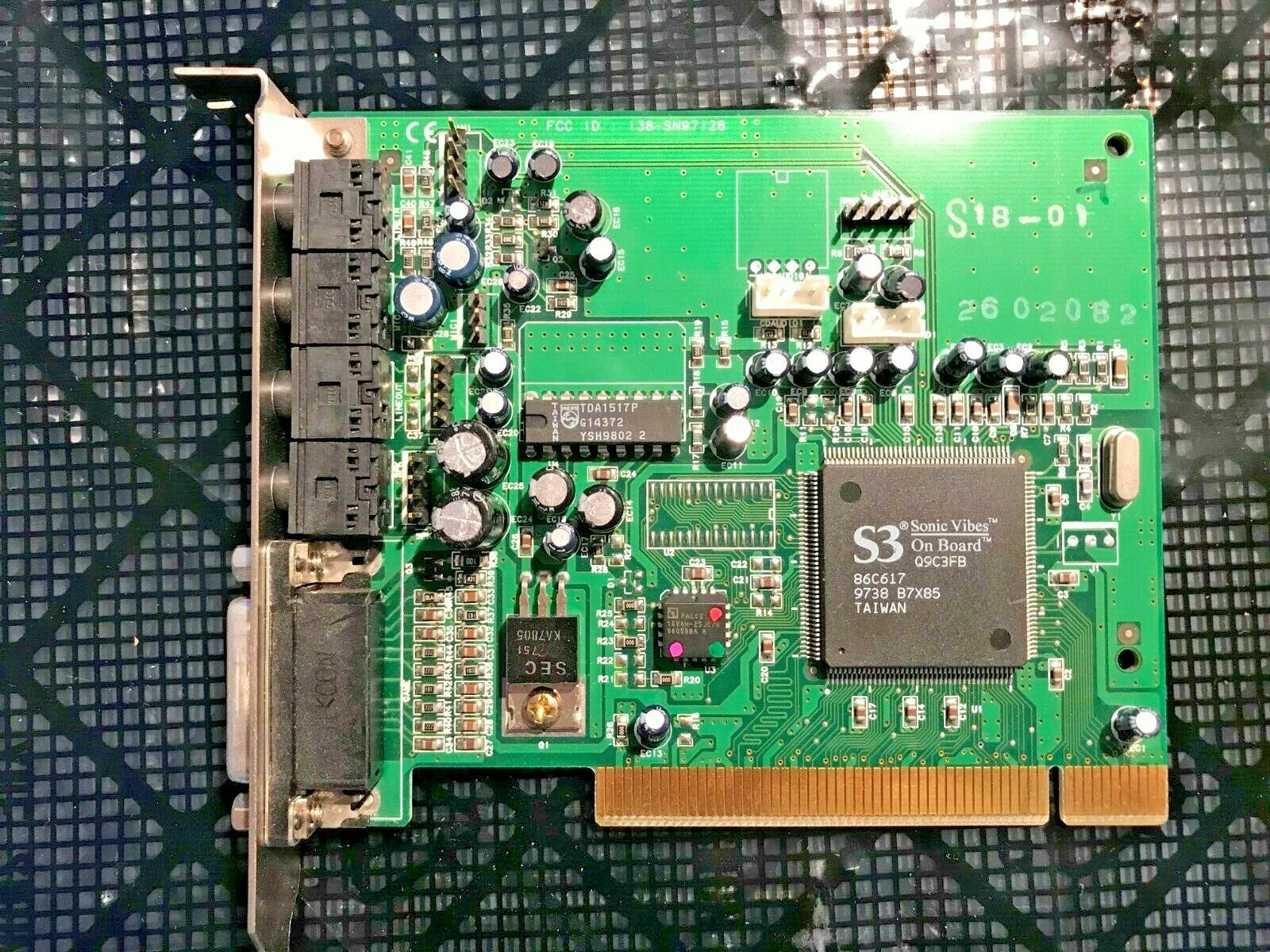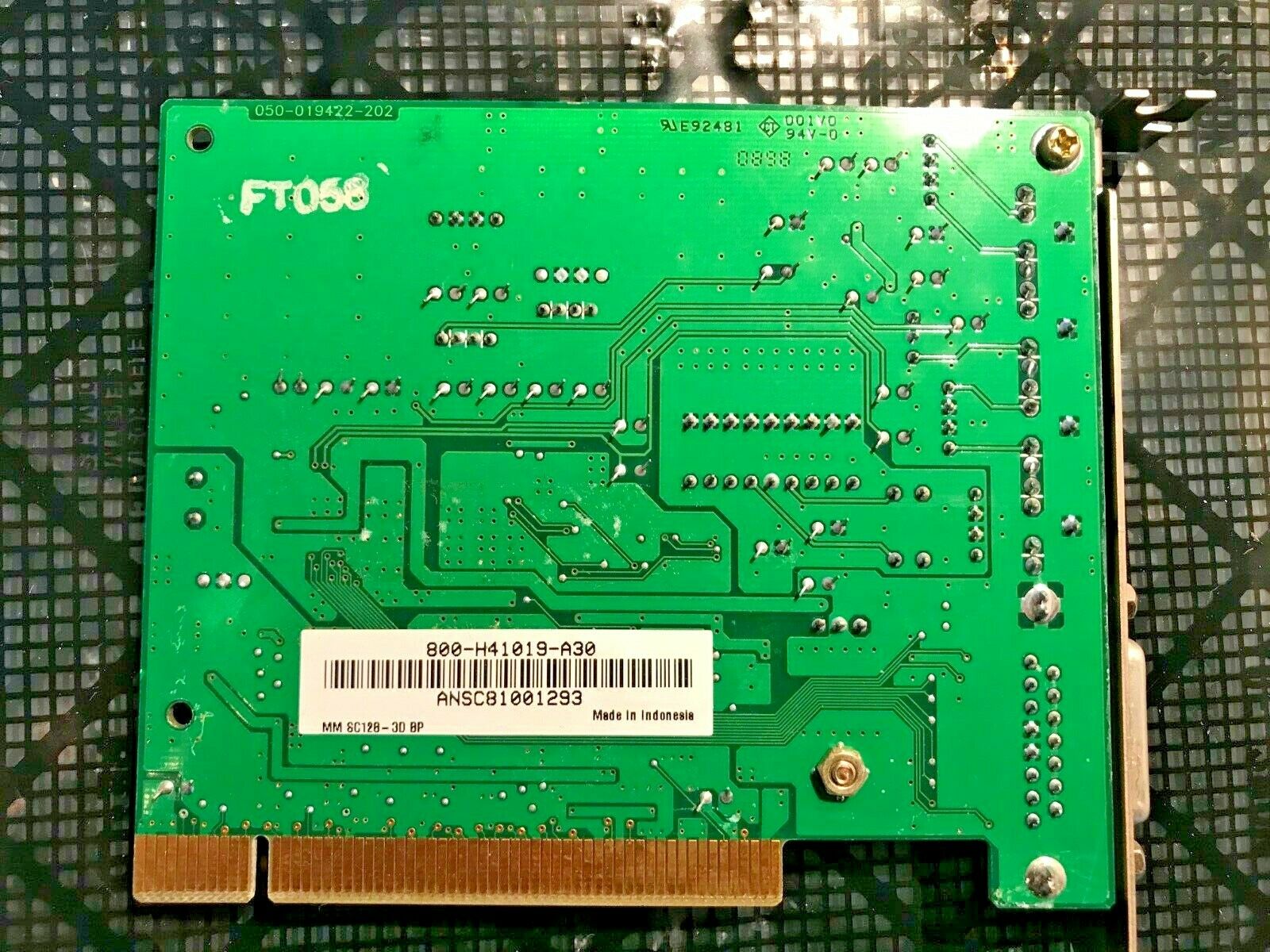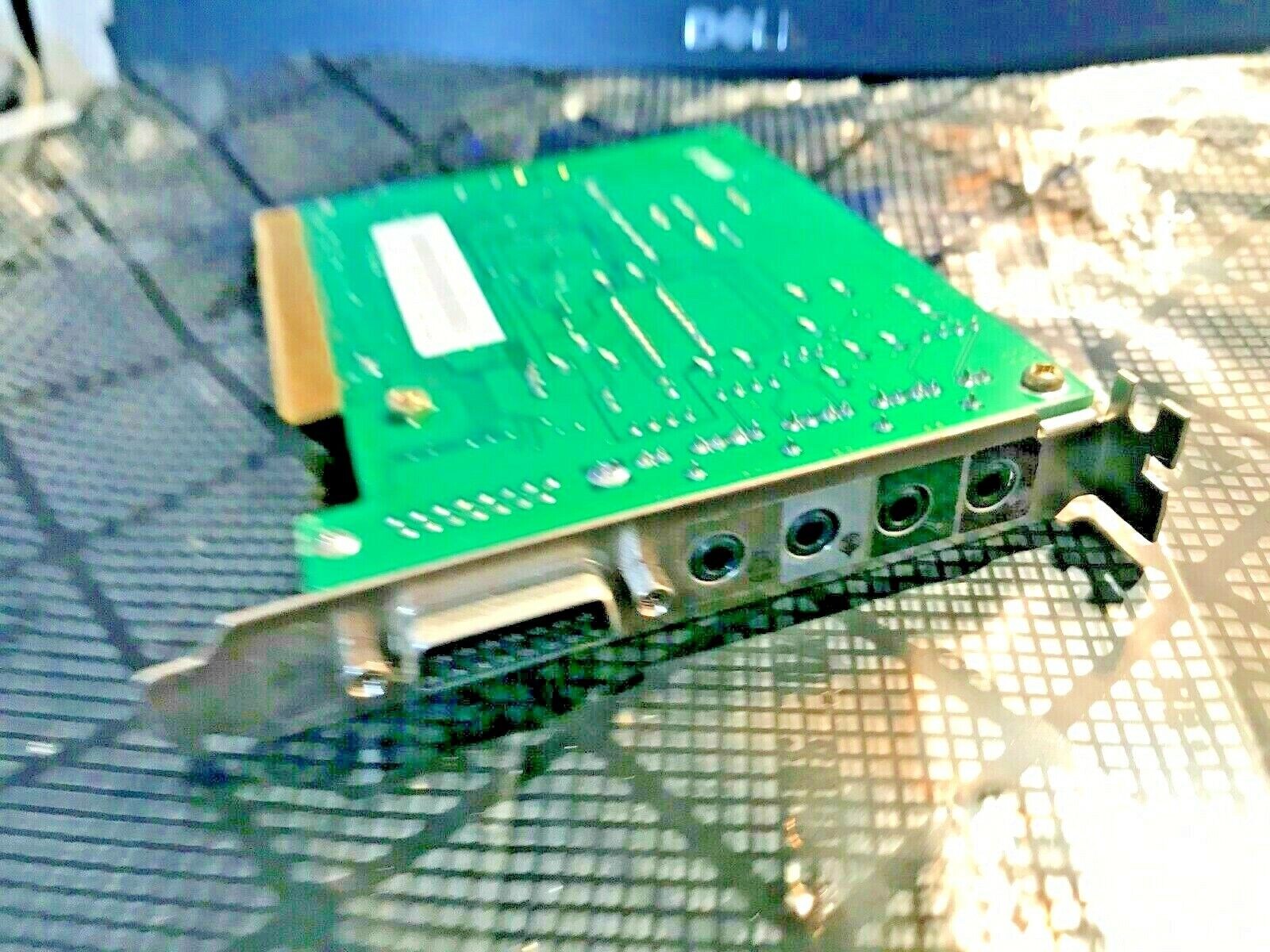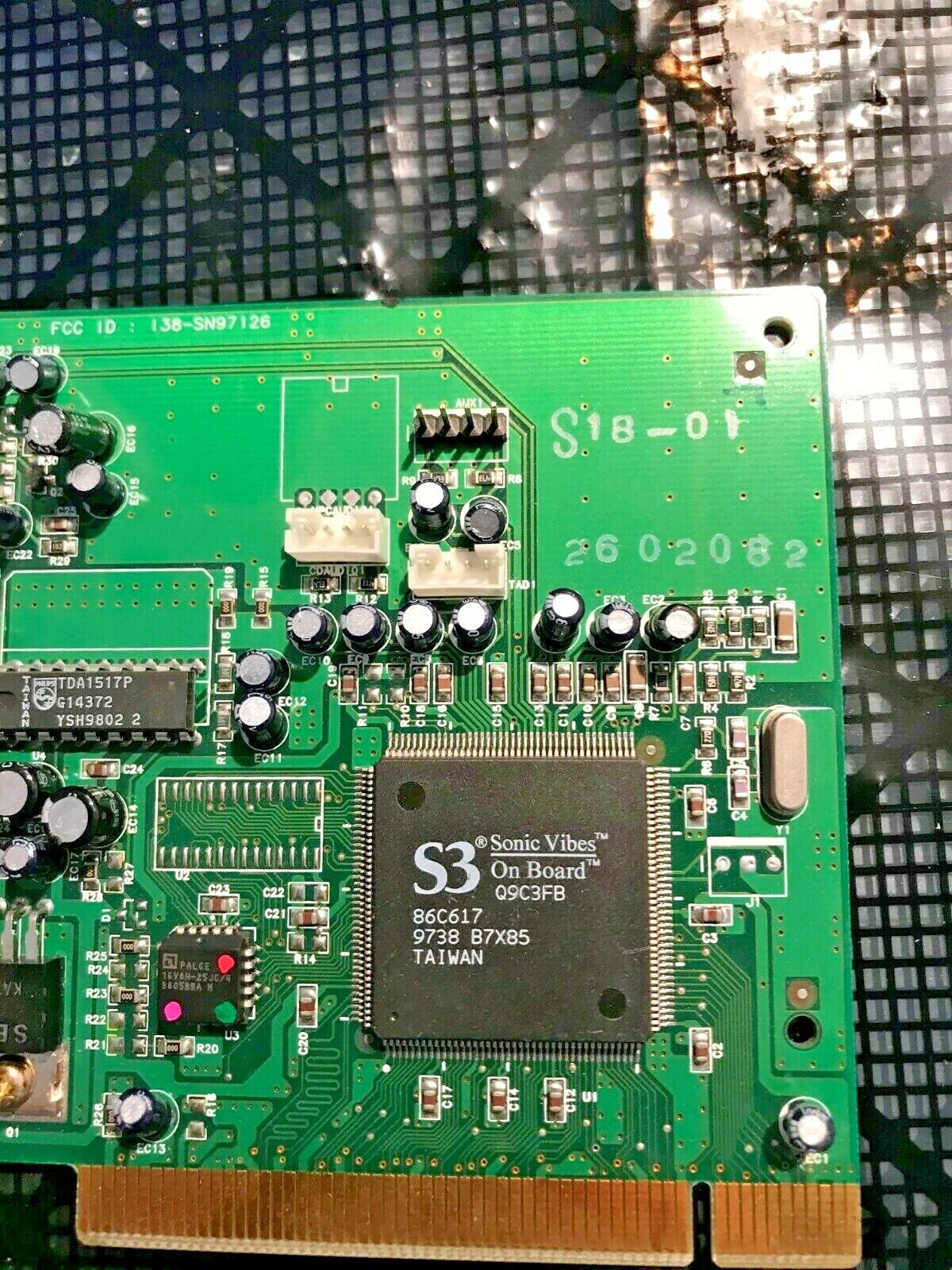Aztech Multimedia SC128-3D PnP
In 1998, Aztech launched what I believe was their last sound card, the Multimedia SC128-3D PnP.
|
Released | 1998 |
| Bus | PCI | |
| FM Synth | (integrated into S3 chip) | |
| Chipset | S3 Sonic Vibes | |
| Standards | Ad Lib, Sound Blaster, Sound Blaster Pro 2, Windows Sound System, General MIDI | |
| Ports | Speaker-Out, Mic-In, Line-In (stereo), Line-Out (stereo) Game port |
|
| CD-ROM | No | |
| Wavetable | No | |
| Plug & Play | Yes | |
| FCC ID(s) | I38-SN97126 | |
| Price | - | |
| See Also | Turtle Beach Daytona |
The SC128-3D used the Sonic Vibes chipset from S3, which was also used on the Turtle Beach Daytona and several other cards. The Turtle Beach version of this was the very first PCI sound card on the market. The SC128-3D contains a 2 MB wavetable patch set from EuPhonics with 32 voices.
Aztech's card based on this chipset does *not* come with the optional 32Kx8 SRAM chip necessary for reverb effects, where other cards like the Turtle Beach do. It does, however, comes with a Line-Out jack in addition to Speaker-Out, Line-In and Mic-In jacks.
Like the Ensoniq AudioPCI cards, Sonic Vibes uses RAM-based wavetable patches which are loaded into RAM when the driver is initialised. The chipset supports 1 MB, 2 MB and 4 MB patchsets which are in .DLS (Downloadable Sound) format.
For legacy DOS support, it uses Distributed DMA (DDMA), and requires a small 3 KB driver to be loaded into memory for it to work, plus a DDMA-compatible motherboard. In addition, for Sound Blaster Pro support to work in DOS the chipset requires an additional driver, S3DOSVM.EXE, to be loaded into memory - this requires EMM386 to be loaded also.
Board Revisions
Competition
In the Media
Setting it Up
Downloads
More Pictures



